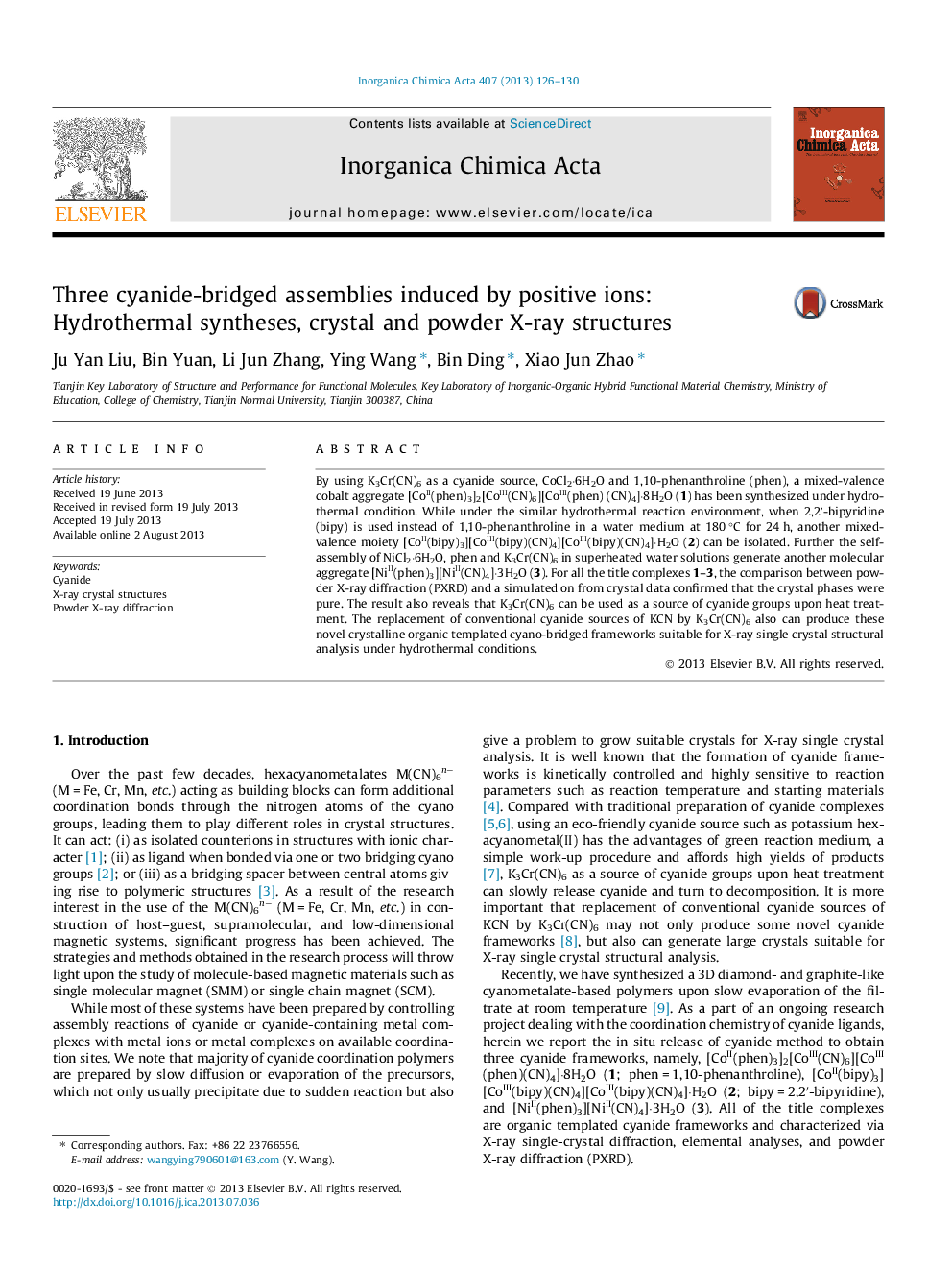| Article ID | Journal | Published Year | Pages | File Type |
|---|---|---|---|---|
| 1312262 | Inorganica Chimica Acta | 2013 | 5 Pages |
•Three cyanide-bridged assemblies have been isolated induced by Positive Ions.•Powder X-ray diffraction (PXRD) confirmed that the crystal phases were pure.•Cyanide salts used in the syntheses play a crucial role in tuning the structures of the compounds.
By using K3Cr(CN)6 as a cyanide source, CoCl2·6H2O and 1,10-phenanthroline (phen), a mixed-valence cobalt aggregate [CoII(phen)3]2[CoIII(CN)6][CoIII(phen) (CN)4]·8H2O (1) has been synthesized under hydrothermal condition. While under the similar hydrothermal reaction environment, when 2,2′-bipyridine (bipy) is used instead of 1,10-phenanthroline in a water medium at 180 °C for 24 h, another mixed-valence moiety [CoII(bipy)3][CoIII(bipy)(CN)4][CoIII(bipy)(CN)4]·H2O (2) can be isolated. Further the self-assembly of NiCl2·6H2O, phen and K3Cr(CN)6 in superheated water solutions generate another molecular aggregate [NiII(phen)3][NiII(CN)4]·3H2O (3). For all the title complexes 1–3, the comparison between powder X-ray diffraction (PXRD) and a simulated on from crystal data confirmed that the crystal phases were pure. The result also reveals that K3Cr(CN)6 can be used as a source of cyanide groups upon heat treatment. The replacement of conventional cyanide sources of KCN by K3Cr(CN)6 also can produce these novel crystalline organic templated cyano-bridged frameworks suitable for X-ray single crystal structural analysis under hydrothermal conditions.
Graphical abstractBy using K3Cr(CN)6 as a cyanide source instead of conventional cyanide sources of KCN, three new cyano-bridged complexes have been isolated. Low release from K3Cr(CN)6 can make cyanide anions act as terminal groups, generating isolated structural moieties.Figure optionsDownload full-size imageDownload as PowerPoint slide
